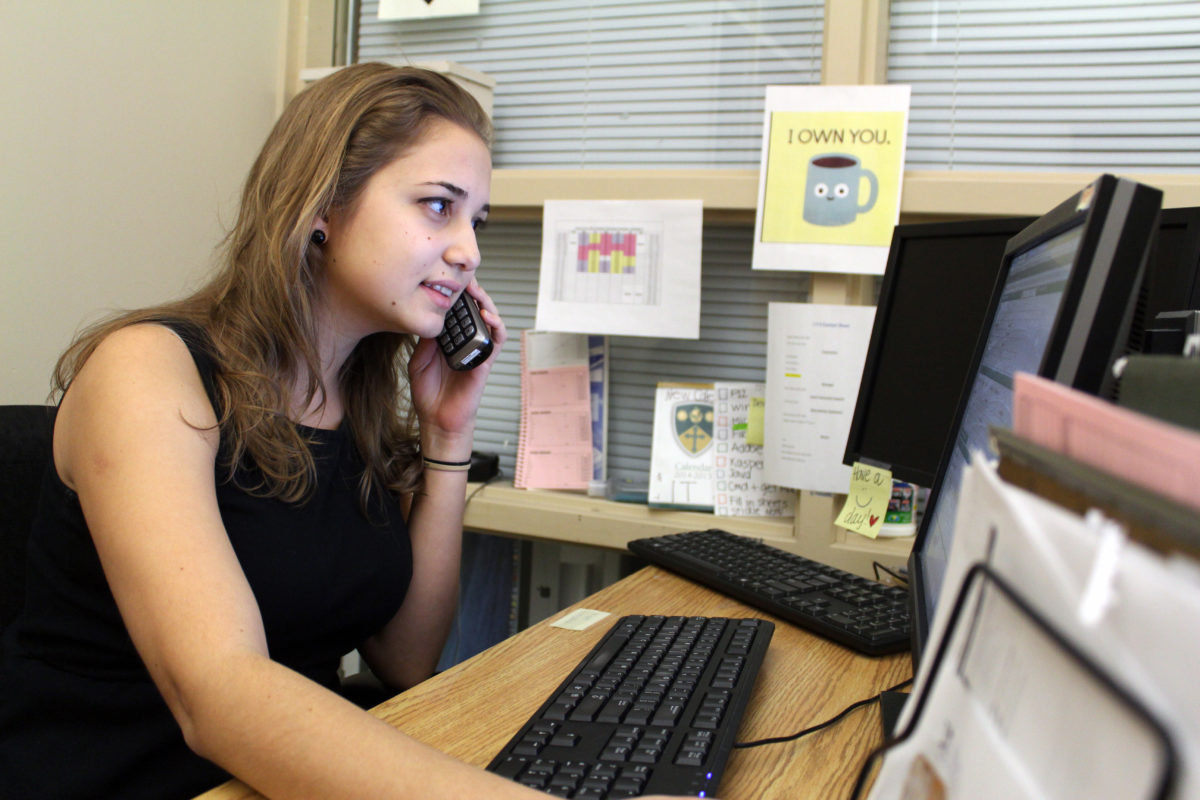Halley Phillips couldn’t find an on-campus job. So, she bought a $150 work permit and now works at Walmart in electronics.
Before Phillips came to STU, she went on a tour. She was told there were tons of jobs available for students – especially international students who needed a work permit to work off-campus.
“First and second year I was searching and searching for jobs. And I applied for jobs, but nothing. I got nothing,” said the fourth-year student from Maine.

There are currently almost 200 students on the payroll for on-campus jobs at STU. St. Thomas has about 2,000 students enrolled.
On-campus jobs include research and teaching assistants for professors, residence assistants and coordinators, student techs and lab assistants, admissions campus tour guides and several others.
Brianna Matchett has three on-campus jobs.
“I find once you get one on-campus job, you make so many connections it’s so much easier to get more than one,” said the second-year student.
She works as a campus tour guide, a note taker and a peer tutor.
The campus tour guide job is very inconsistent, but she usually gives a tour one every two weeks. She gets paid $10.70 an hour.
STU’s employment and financial aid coordinator Trish Murray Zelmer is in charge of posting jobs on the website and runs weekly workshops such as how to use LinkedIn and how to write your resume.
“One of the biggest barriers to employment on-campus and off-campus is bad resumes,” she said. “It’s a huge barrier so I’m trying to get the word out that you can’t just write a few things on a piece of paper and expect a call back.”
Murray Zelmer said if students keep applying to on-campus jobs and are not hearing back, then they should attend a resume workshop or email her.
“With the 750 B.A. graduates last year, how do you make yourself stand out from that 750 so that you get the job that you want?” she said. “My job is to get students to learn how to fish.”
Jacqueline Gallant has had the same on-campus job for the last three years.
The fourth-year student is a lab assistant in the Sir James Dunn Hall computer lab. She answers the phones and helps students with password or printing questions.
“I get to do homework a lot because it’s usually quiet. And I love my bosses and the guys that work there are really fun. I have a little work family.”
Gallant is one of seven lab assistants. There are also three student techs who go to professors’ offices or classrooms to help with technical questions.
Gallant works about 13 hours per week and gets paid $10.25 per hour.
Gallant said the benefit of working on campus is the convenience.
“I don’t have to go anywhere else. I can go to work in between classes. Especially when I used to live on campus second and third year – I lived in one building and I worked in the next building.”
Gallant said only a couple of her friends work on-campus but she thinks there are opportunities on-campus.
“Mostly I think people just complain about not having jobs in general.”
